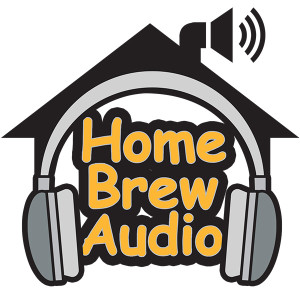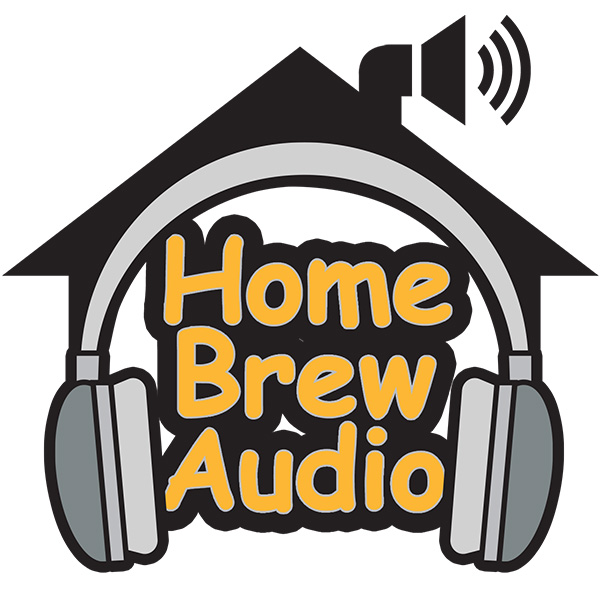Episodes

Wednesday May 28, 2025
Clearing Up Confusion About ACX Since Audacity Version 3.6
Wednesday May 28, 2025
Wednesday May 28, 2025
I mentioned putting a link to the video on the Home Brew Audio YouTube Channel here in the notes. Here that is: https://youtu.be/kYkbArXHKCE
The Limiter tool changed in recent version of Audacity and it looks totally different from the video. So much so that you cannot follow the video's instructions.
Fear not though! You can still find the old Limiter in newer versions of Audacity by picking "Legacy Limiter" instead of just "Limiter.

Monday Mar 31, 2025
Passing The Dreaded ACX Check For Audible Audio Books
Monday Mar 31, 2025
Monday Mar 31, 2025
As I mentioned in the episode, there is a video and an article showing you a walk-through of the settings and stuff I mentioned for using the ACX Check plugin for Audacity (regardless of what program you use to actually record and edit your audio). Here they are:
Home Brew Audio website: https://www.homebrewaudio.com/27097/acx-audio-submission-requirements-what-the-heck-do-they-mean/
Home Brew Audio YouTube video: https://youtu.be/kYkbArXHKCE?si=kaPOR4SsGz3UeRPg

Tuesday Feb 04, 2025
What Is Professional Sounding Audio Anyway?
Tuesday Feb 04, 2025
Tuesday Feb 04, 2025
I talk a lot about making your audio sound professional. But it helps to know what the heck that even means. This episode gives several audio samples of what I consider to be NOT pro audio, and then several samples that I DO think are professional sounding. This should help nail down the answer to the question..."what even IS professional quality anyway?"
I mention in the episode that this comes from a new mini-course called Pro Podcast Recording Kickstarter. You can find that at https://www.homebrewaudio.com at the top of the page. Normally you can just go to the Courses link up at the top menu. But for now (and a few more weeks at least) there is a link at the very tippy top of the page where you can get a free pdf and the option to get the mini-course for $7 (normally $49).

Tuesday Jul 02, 2024
Where Has Ken Been and Dealing With Room Sound
Tuesday Jul 02, 2024
Tuesday Jul 02, 2024
We started moving in November 2023 and we are STILL MOVING! I don't think we know how moving works :-P.
Anyway, that is my excuse as to where I've been. And since I'm in this new house and have not been able to get the studio set up yet, I had to record this episode with bare walls. I know!! But rather than try to fix the room reverb issue that resulted, I left it in the recording and made the topic of room sound (room reverb/echo) the topic of this episode.

Friday Mar 15, 2024
My review of the Samson Q9U USB/XLR microphone
Friday Mar 15, 2024
Friday Mar 15, 2024
My review of the Samson Q9U USB/XLR microphone. I actually used this mic to record this podcast episode. so you can hear how it sounds.

Tuesday Oct 31, 2023
The Easiest And Fastest Way To Improve Podcast Audio Quality
Tuesday Oct 31, 2023
Tuesday Oct 31, 2023
This episode shows you how to quickly and easily improve the audio quality of your podcast, voiceover, audiobook, videos, and even singing.
And while you can do this like right now - no mater what microphone you have - doing this solves one large problem (audio quality) while creating a few new MINOR issues.
Also, doing this is free! Or at least it CAN be. Especially for short recordings. But if you plan to regularly record like this, you'll want to make some changes. And I lay out the recommended "things" in the episode.
You'll need to learn SOME editing. But you can likely do it with whatever audio recording program you already use. If you DON'T already use recording software (some podcasters record only on web applications), you can do the things I talk about in Audacity, which is free and easy to use.

Wednesday Aug 30, 2023
My Review of the SonicPresence SP15 Binaural Microphone for Spatial Audio
Wednesday Aug 30, 2023
Wednesday Aug 30, 2023
I spent about a month playing with and testing a different kind of microphone for review. It's called the SP15 binaural microphone by SonicPresence.
The purpose of this mic is not to record yourself (typically), but rather to record what YOU are hearing. It records your surroundings in sometimes startlingly accurate surround sound type audio.
The idea is that you would go out to an event, a party, a pub with live music, or just outside in nature. And whoever listens to the audio you recorded will hear what you heard in the way that you heard it.
I have several examples in this episode for you to listen to. But make sure you use headphones! If you don't, it might sort of be like trying to watch a 3D movie without the special 3D glasses.
I recorded my trip to a pub with live music and lots of people having a good time. I also tested how well the SP15 would pick up stereo music versus mono with a test in my studio with mono and stereo acoustic guitar. And finally, I used it for a selfie video and compared that to the audio quality with just an iPhone and also with a RODE Wireless Go II mic, which is designed for that purpose. I think the SP15 sounded the best of all of those. But you can listen and be the judge.
If you want to find out more or buy one from B&H, here are a couple of links (they are affiliate links to help fund this podcast):
For the SP15C - for mobile devices - https://homerecording.click/sp15c
For the SP15V - for DSLR type cameras or camcorders - https://homerecording.click/sp15v

Friday Jul 07, 2023
Friday Jul 07, 2023
I spent a couple of weeks really testing out the RODE NT1 5th Generation Large Diaphragm Condenser Microphone. There is a lot to love. But I have a few quibbles as well.
Unlike previous versions of the well-known NT1, the 5th generation is a "hybrid" mic. That means it is BOTH/EITHER a standard XLR mic OR a USB mic!
Pretty much every quibble I had was with the USB mode, like not having a headphone jack on the mic, and having issues getting Windows 11 to recognize it while also being able to use the RODE Connect software.
This podcast episode was primarily about the highlights - how it sounds, and my personal favorite thing about it - 32-Bit Float!
But I do go into more details about my quibbles, plus the use of the on-board effects that you can use in USB mode, controlled by RODE Connect software (free) in the YouTube video I did on the mic, which you can find here: https://youtu.be/tn0IxGA1-XI

Tuesday May 30, 2023
My Review of The RØDE NT-USB+ Microphone
Tuesday May 30, 2023
Tuesday May 30, 2023
I put the RØDE NT-USB+ USB Microphone through its paces. After all was said and done, I have decided this is my new favorite USB mic. When I recommend a mic to folks who are on a budget (heck, even if you are NOT on a budget), this is the mic I'll recommend. It used to be the Blue Yeti. But that has now been dethroned :-).
There are some audio samples in this episode. And it would be best to listen at least to that part with headphones to get the detail.
Bottom line - this mic sounds really close to the same quality as mics costing 3 times more. The NT-USB+ goes for $169, BTW.

Wednesday Apr 12, 2023
What is a Click Track? And Why Would I Want To Use One?
Wednesday Apr 12, 2023
Wednesday Apr 12, 2023
What is a Click Track? And what is it good for? I explain what it is and give several reasons for using one.
I use Reaper, which makes it easy to use a click track and to toggle the metronome off and on.
Reaper also has MIDI capability, so it's easy to just put a basic drum pattern on a track instead of using the official "click track." The result will be the same in that the beats will all fall onto the project tempo grid lines. But it can be easier to feel the rhythm of a song with drums instead of clicky-clacky sounds inherent to a default metronome sound in recording programs.
Also, I use single-hit drum samples in this episode. I didn't mention where I got those. I have a virtual instrument (VSTi) called Storm Drum that I bought from Native Instruments years ago. I just loaded that up on a track and used the MIDI editor to trigger those drum sounds.

